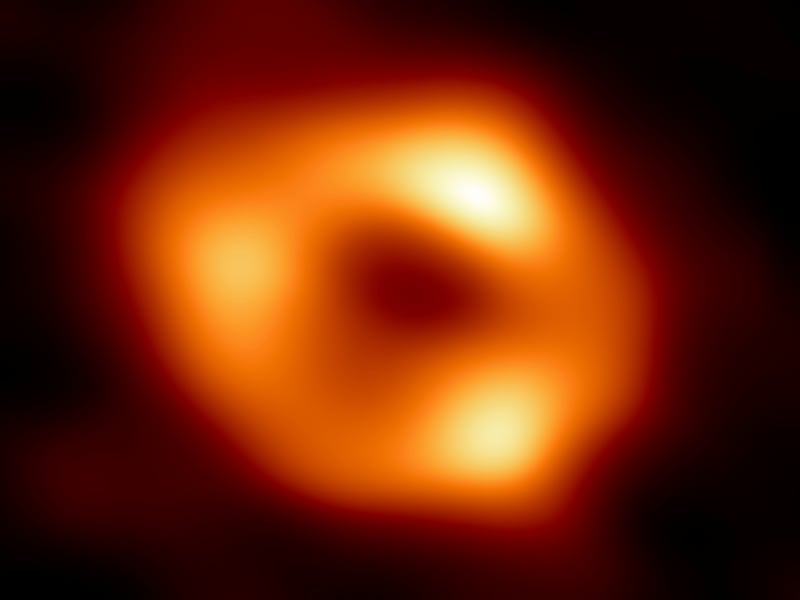Scientists have captured the world’s first image of the supermassive black hole at the center of the Milky Way galaxy, an extremely difficult feat given that light and matter cannot escape a black hole’s center.
Why it matters: The image is not only the first taken of the Milky Way’s black hole — named Sagittarius A* because it is near the constellation Sagittarius as seen from Earth — it also confirms Albert Einstein’s general theory of relativity because it shows the black hole is exactly the size Einstein’s equations predict, according to The Associated Press.
- “It’s the first direct observation confirming the presence of the black hole ... as the beating heart of the Milky Way,” writes CNN.
- “I met this black hole 20 years ago and have loved it and tried to understand it since,” University of Arizona astrophysicist Dr. Feryal Özel said during a news conference on Thursday, according to The New York Times. “But until now, we didn’t have the direct picture.”
- Özel was one of more than 300 scientists from 80 separate institutions who worked on the research, which was published Thursday in The Astrophysical Journal Letters. Three years ago, the same team of researchers captured the first picture of a black hole — that one residing in the Messier 87 galaxy.
How big is Sagittarius A*? According to The Washington Post, the black hole’s mass is greater than that of 4 million suns. Compared to other supermassive black holes, though, scientists say Sagittarius A* is relatively calm.
- Black holes absorb galactic material, but Özel called this one a “gentle giant,” which is “eating very little.” Another astronomer said it’s comparable to a human eating a single grain of rice over millions of years, according to The Associated Press.
- “It is the cowardly lion of black holes,” said project scientist Geoffrey Bower, of Taiwan’s Academia Sinica Institute of Astronomy and Astrophysics.
How to photograph a black hole: Unfortunately — at least for the amateur space photographer — taking a picture of a black hole is a lot harder than it sounds.
- Scientists used the Event Horizon Telescope, a collection of eight synchronized radio telescopes placed around the world — including one at the South Pole — to capture the image, according to The Associated Press.
- Earth’s atmosphere, and intervening dust and ionized particles in the Milky Way, interfered with astronomers’ view of the black hole, according to The Washington Post, and the data took years to fully process and analyze.
- By definition, black holes are technically invisible, but galactic matter is superheated to trillions of degrees Celsius just before being sucked in, which releases light in the form of X-rays and radio waves, according to CNET. After traveling 26,000 years to reach us, those waves make up the fuzzy, doughnut shape we can now see at the center of our galaxy.


